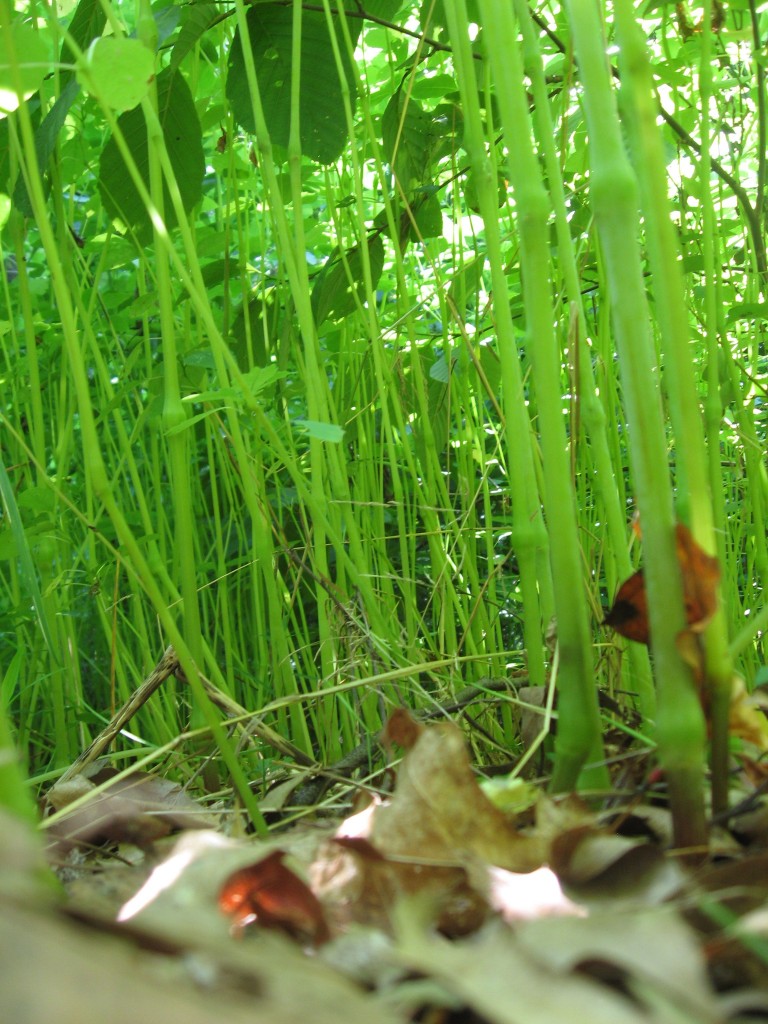
We never imagined that this ancient forest existed, right in West Fairmount Park! Â We ventured into the Horticultural Center one Sunday looking for flowers and something exciting to see. Â Usually there is always a flower to view, or an interesting monument to admire. This forest appeared before our eyes, all along the stream that flows from the Japanese House down towards the Schuylkill River. Bright green, knobby trunks rose to the sky, carrying a network of green branches and a canopy of leaves, topping out at about 1200(mm) in height. Some were as high as 1500!!
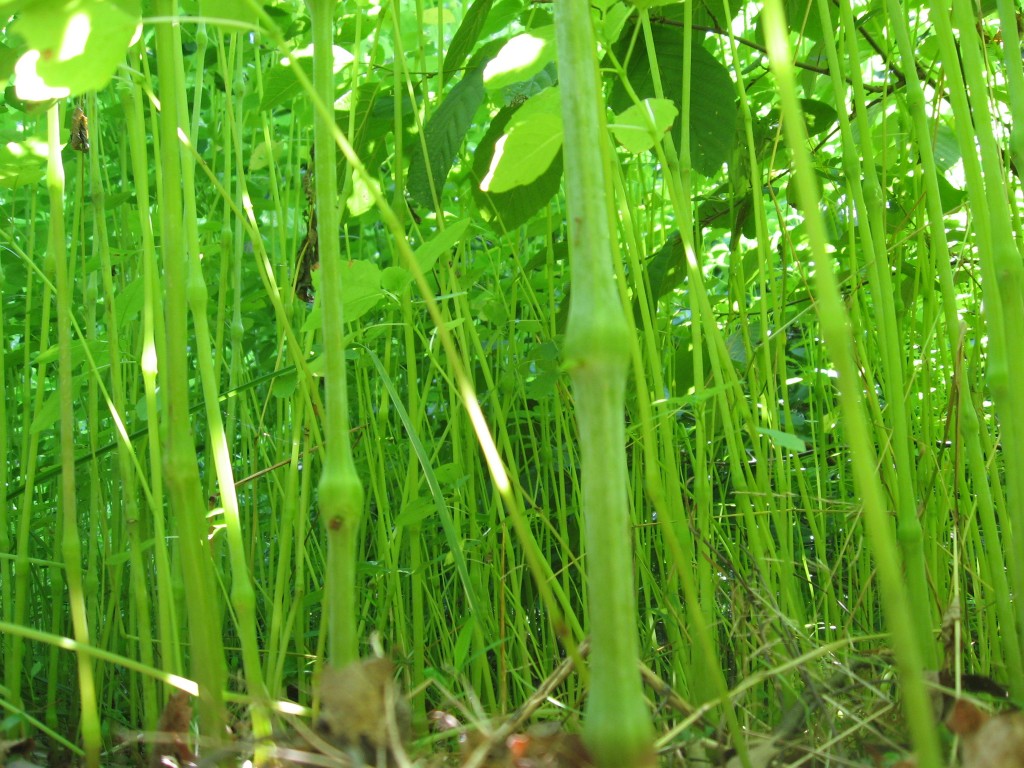
We wandered into this mysterious forest and marveled at the structure of the Impatiens capensis ‘trees’. They grow at astounding rates. Â Just touching the surface of the trunks is an experience all in itself. Â There is a blueish moist haze that covers the surface that can be easily rubbed off. Â The shiny smooth surface gives to pressure and it has a translucent quality, allowing light to penetrate the whole structure. Unlike a real tree, these super-structures are completely alive through and through. Â In order to reach their astounding heights, they form knobs along the way, in order to stabilize the structure. Like a human knee, fingers or an elbow, these knobs increase tensile strength and allow for movement. However these knobs are not joints like we humans have.
It looks like a forest of rapidly growing green bones.
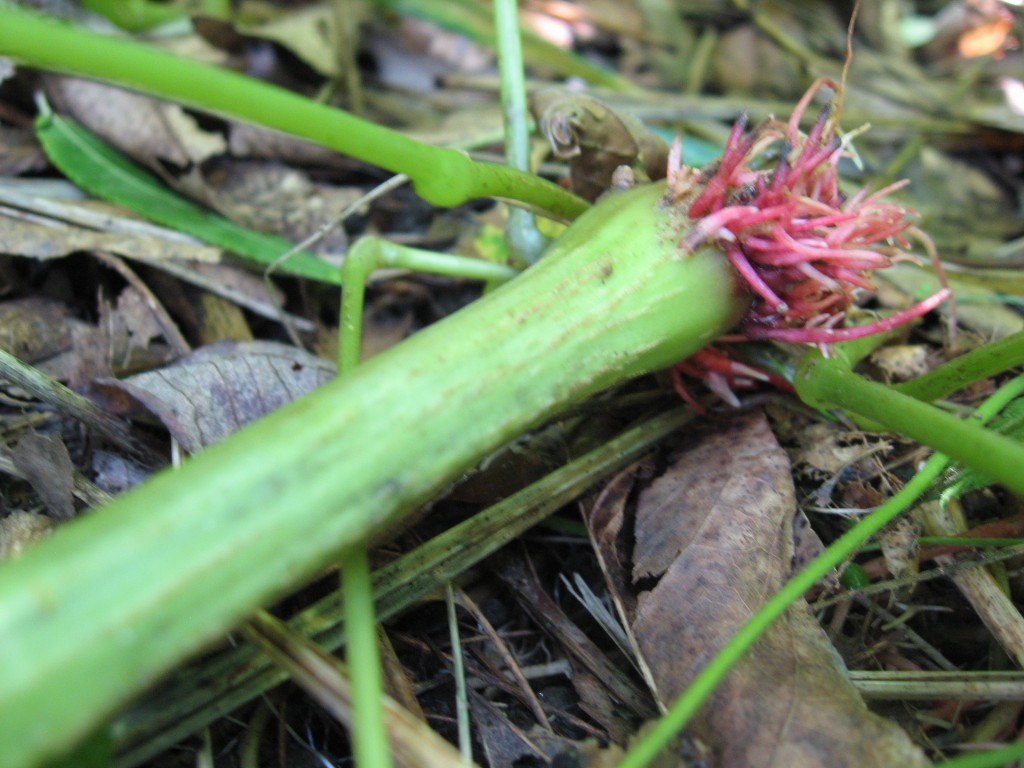
As we made our way through the forest, we found a ‘log’. Â It had recently toppled. Â It gave us the opportunity to study the plant further and to see its roots up close. Â Towards the bottom of the plant, the tissue is very dense, and there is a degree of fluting, like in a stone column. Â This very bottom of the trunk lacked the succulent quality we noticed on the higher portions of the plant.
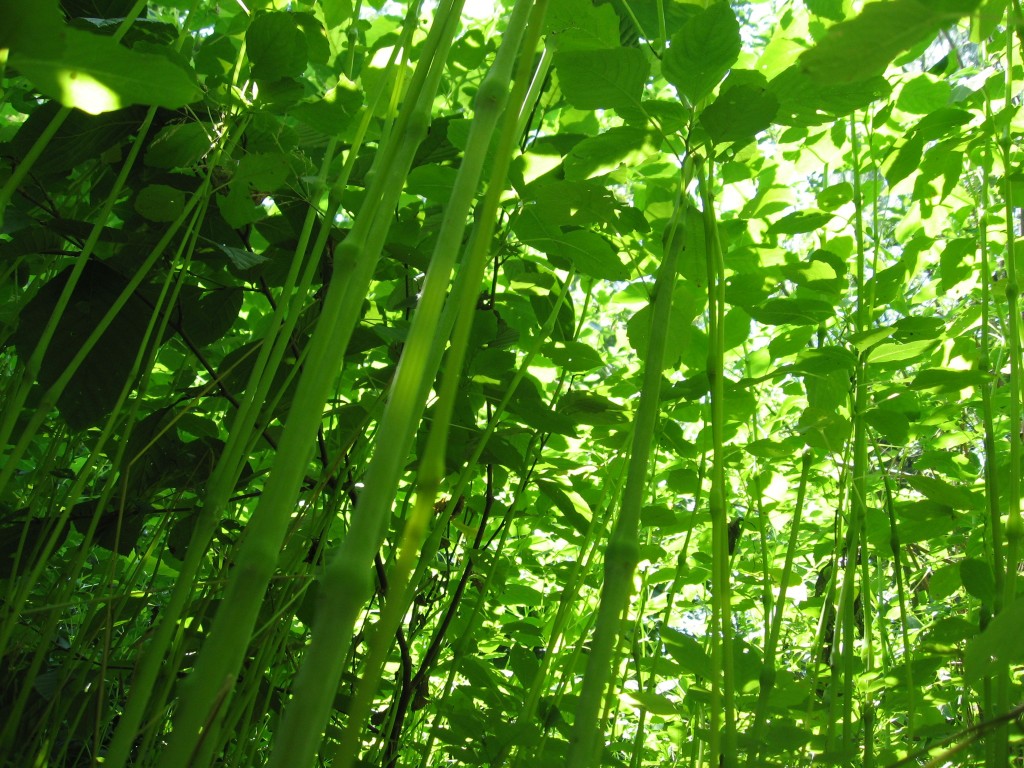
Gazing  up at the canopy, a dizzying 1200 millimeters above!  Imagine the view from up there!  Perhaps we could see Alexander Sterling Calder’s Sundial sculpture or the Butterfly garden!
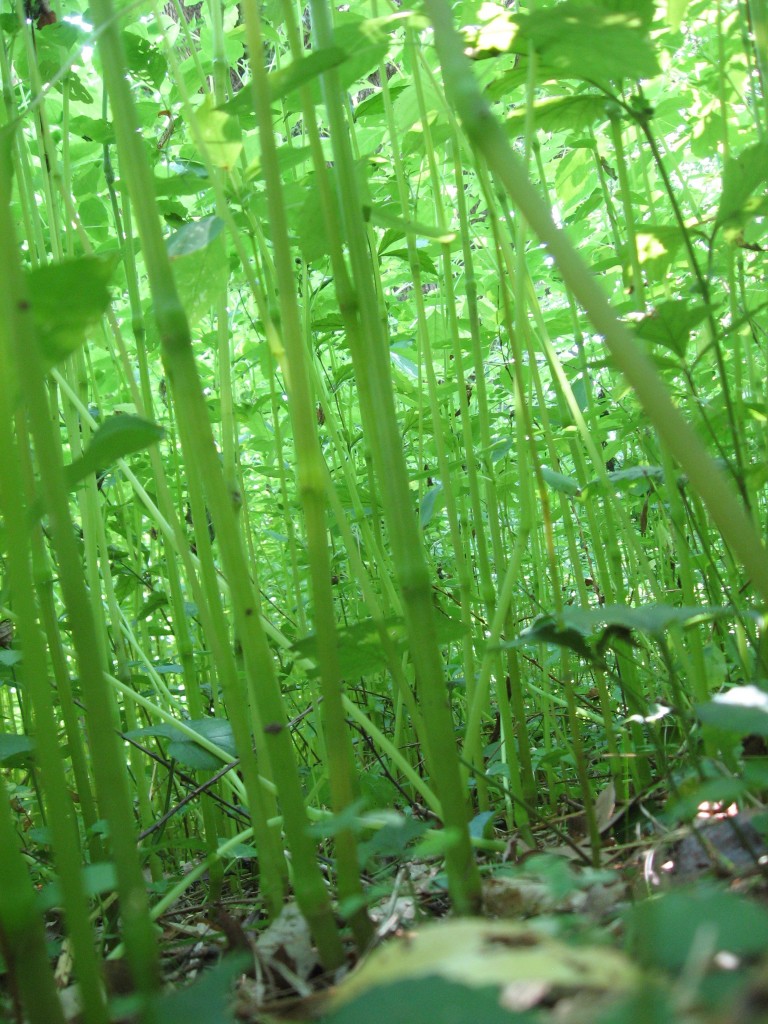
However, this cool, tranquil forest offered a respite from the beating sun. Â It is a quiet and peaceful place, with a rich herbaceous layer and an enchanting filtration of light. After a picnic and an engaging discussion about the ephemeral beauty of nature’s creations and evolutions as well as the enduring, seemingly timeless qualities of its structural continuity and core genetic stability.
This forest has sparked our imaginations of what an ancient forest looked like. Our early Sunday afternoon was the adventure we were seeking. Â Something new to see. Â Looking for a flower, we ended up marveling at a root and a stem. Â An on-the-ground view of a plant’s structure, its architectural state. Â Like a city of brick rowhouses, the plant repeats a form, cell by cell, obeying the same principles of physics that holds together the rowhome. Â Changes come, often from important or severe events. Â The segment of the population that survives this cataclysm, will pass on those genetics.
The Darwinian model: five minutes to learn, a lifetime to understand. Â Change happens so fast and so slow at the same time- we really need science to make sense of some questions that are crucial to the survival of our ecosystems all around us as well as our own. Â So we can make informed and good decisions about what to do and not to do and when.
This was what we discussed as we gazed up at the canopy of Jewelweed, 1200 millimeters above.
We came to the Horticultural Center in Fairmount Park to see flowers and we ended up astounded by the concept of the structure of the plants that create flowers. The structure is amazing in the jewelweed forest. Â We are reminded of Joe-pye weed, and wild Bergomat, other tall summertime flowers. The Joe-pye weed has a rounded, tubular stem, like a pipe, and the bergomat has a Mint-family square stem, like a steel beam, the kind of beam used in very tall skyscrapers, both plants reaching into the 1200-1500 mm range. Â These plants are notable for their structures, as many other late summer flowering plants should be.
As fascinating and intellectually engaging the stems, trunks, roots of plants may be, it is the flower  that is the most potent and enchanting device that has lured us into the forest of Botany.
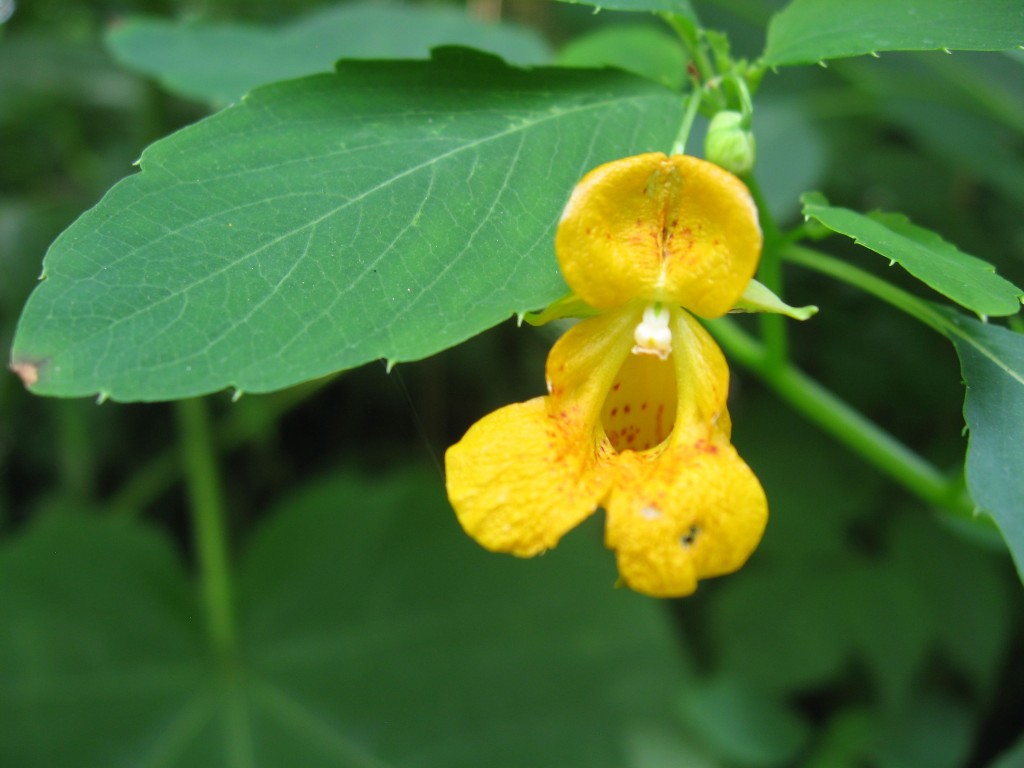
Hummingbirds and butterflies both have nectar acquiring structures that can reach deep into this almost 20 millimeter long flower. Â The opening is only a few millimeters wide, something the hummingbirds and butterflies have no problem with. Â The bumblebees however, are much wider and do not have the ability to elegantly sip nectar from the jewelweed flower. Â They really want to be part of the action, so what they do is climb into the flower. Â Sometimes they get stuck, but eventually the end result is that they tear the flower apart.
This what happened to the  Jewelweed flower in our  backyard.  There was just one flower and it got tore up by a bumblebee.  In its its last day  it was a shredded up mess that was still blooming. What a proud moment for our garden.  Our first ever Jewelweed plant, grown from a seed we scattered just hoping maybe one would grow, to have its first flower ravaged by a native bumblebee. Can it get better than that? The wildest aspects of nature are now in our yard.
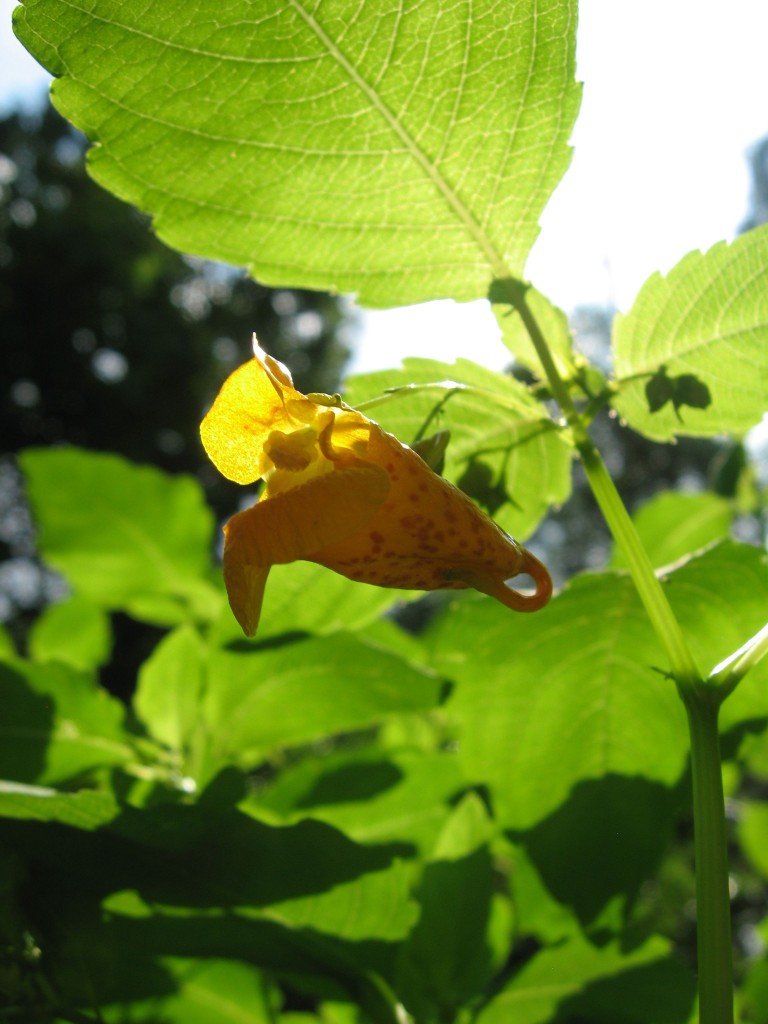
We found the flowers hovering in the canopy, dangling from tiny, wiry stems, as if they were gracing the setting in the opera.
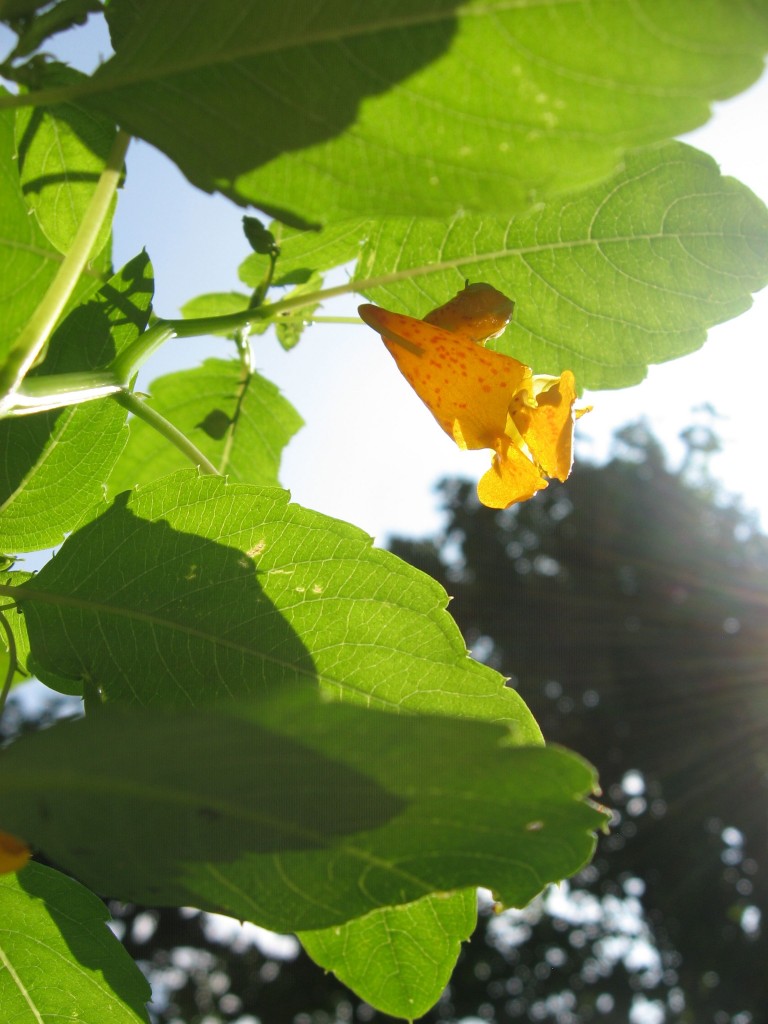
The sun illuminated them. Â We made it to the blue sky at the top of the forest, where the flowers were.
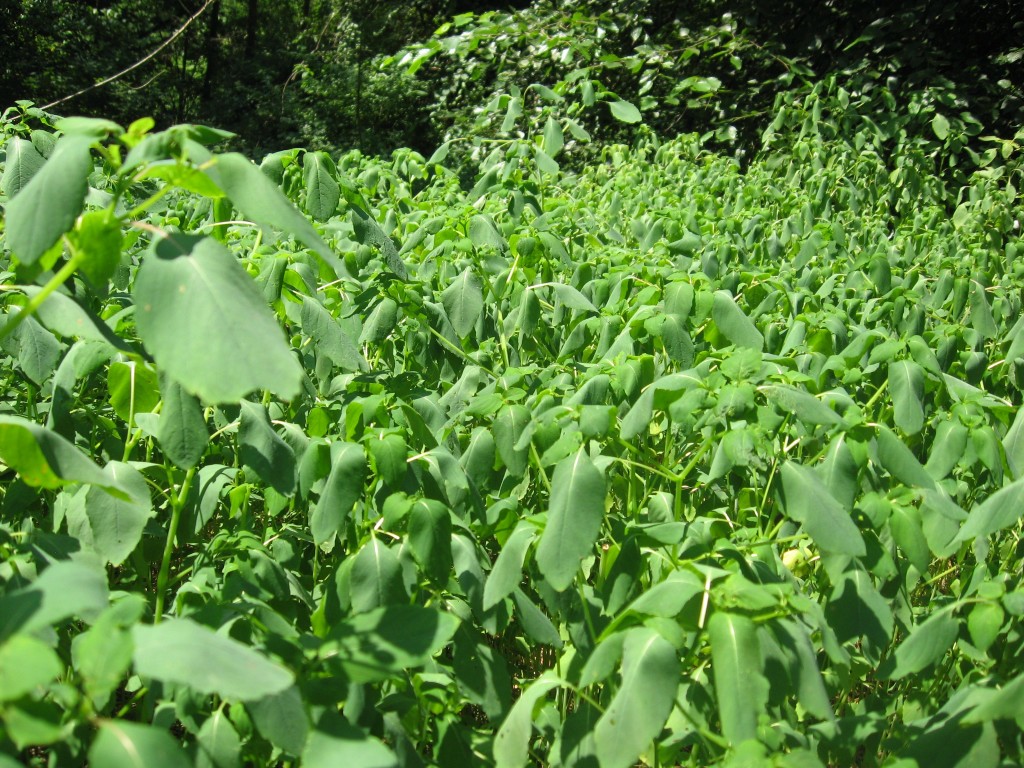
Up here, above the forest canopy of Jewelweed, the top-most leaves are wilting in the bright sunlight. When the fall comes, the whole place will disappear. This annual plant will have re-seeded itself sufficiently to re-grow in the spring. The seeds of this plant are a very interesting topic as well.
- West Fairmount Park, Horticultural Center, Philadelphia Pennsylvania



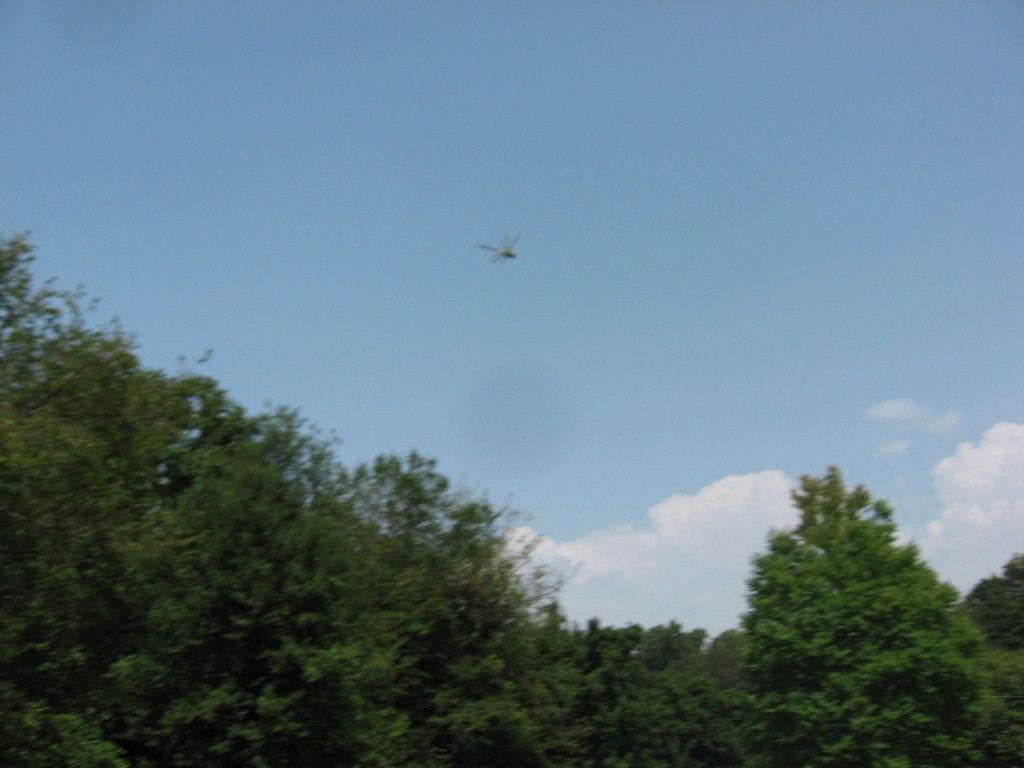
Love this post!
Isabelle I am glad you liked it. I revisited the jewelweed ‘forest’ and there were some downed ‘trees’. A lot of flowers on the ground too.
I love those close-to-the-ground shots. The photography is great.
Mike, Always on the lookout for a new and unique angle. We aim to make a better photograph. Anything we can do to get folks interested in our fascinating green neighbors in the woods. Sean